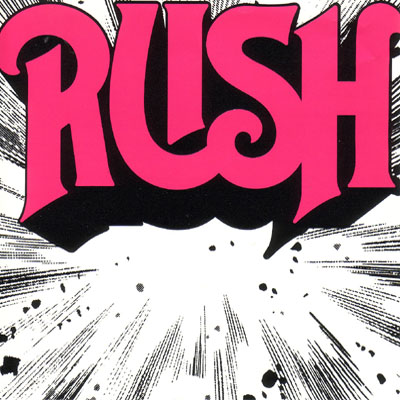
Rush (1974)

1.Finding My Way
2.Need Some Love
3.Take A Friend
4.Here Again
5.What You're Doing
6.In the Mood
7.Before and After
8.Working Man
Rush’s self-titled debut album appeared in 1974, when its creators were barely out of school uniforms. Despite the obvious youthfulness, what emerged was arguably the heaviest and most straight-ahead rock record the band would ever produce. Not their finest hour, perhaps, but certainly their rawest. The lineup featured Alex Lifeson and Geddy Lee—both future stalwarts—and, on drums, John Rutsey, whose tenure with the group would be short-lived but significant enough to capture this singular moment in their evolution.
The tone is set from the outset. The band doesn’t dabble in subtleties or over-ambitious structures; instead, they offer up a brash, confident statement of intent. The opening cut, Finding My Way, is all screaming guitar riff and adolescent bravado—a straightforward rocker that would have fit comfortably on a Zeppelin release. Alex Lifeson, in particular, seems determined to make himself heard above all else, even if the mix occasionally muddles his finer touches.
The album’s centerpiece, Working Man, is both its longest and strongest track. It was, in fact, the moment that brought them to wider attention. When the song was first aired by a Cleveland DJ—chosen purely for its length as an opportune bathroom break—the phone lines lit up with curious callers wondering when Led Zeppelin had released a new record. That sort of mistaken identity is telling; the influence is so pronounced it's almost comical. But while Working Man borrows liberally from the heavy rock playbook, it does so with such sincerity and muscle that it never feels counterfeit.
Side two kicks off with What You’re Doing, another hard-edged number that manages to maintain the same energy and drive. The rest of the album doesn’t always hit the same highs, and occasionally the material slips into filler territory, but it’s largely held aloft by the band’s sheer enthusiasm and instrumental tightness. Even in their earliest stages, Rush knew how to play.
The production, by today’s standards, is endearingly naïve. There’s a moment on Finding My Way where the guitar shifts channels with all the finesse of someone learning how stereo panning works for the first time—because, quite possibly, they were. It’s the kind of youthful misstep you quickly forgive, if not cherish. They were clearly enjoying themselves, and the mistakes have a certain charm.
Rutsey, meanwhile, never got the chance to tour the record. Due to illness (and perhaps a disinterest in the demanding life of a rock drummer), he bowed out just before the band found their footing. His replacement, Neil Peart, would not only transform their rhythmic architecture but also take on lyrical duties. And that’s crucial: Peart’s arrival heralded the band’s transition into more intricate, intellectual territory. Without him, this debut remains their most unfiltered stab at classic hard rock—free of the conceptual trappings that would later define their work.
There are some fans—perhaps drawn more to riffs than philosophies—who argue this was Rush at their best. Maybe that’s a stretch. But there’s no denying the power here, nor the sense of a band revving its engines, fully intent on taking off.
SPINAL TAP MOMENT: The original back cover bears the advice, “This album is meant to be played loud.” It’s not just a gimmick. It’s an instruction. And quite possibly the most honest piece of advice any band has ever given.
Go back to the main page
Go To Next Review